What's Good: Unibody construction cuts down on potential build quality issues.
What's Bad: Ships with Android OS 1.6; MOTOBLUR can be tricky and confusing at times; optical navigation frustrating at times.
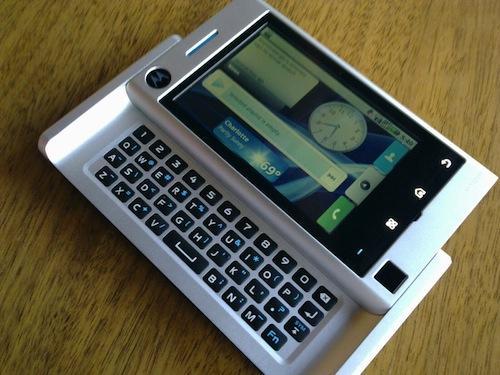
Motorola is back with the Devour, the third Android-powered device to land on Verizon Wireless. Originally spotted in Megan Fox's bathtub during Super Bowl 2010, the phone is available at retail locations across the United States. The question that's in every technology person's mind, however, is: will the unit sell, given how close the company's flagship Android device (the DROID) is in regards to price?
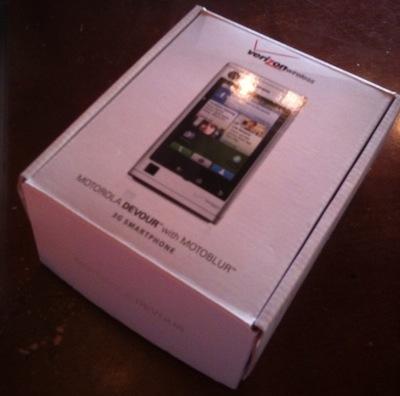
The Motorola Devour ships in a small, environmentally conscious box. Inside, you'll find the device, battery, an AC adapter, USB cable (which doubles as the charging cord), an 8 GB microSD card (installed in phone, with support for up to 32 GB), and instruction manuals. Coming in at 4.55 inches long by 2.4 inches wide by 0.61 inch thick, the device weighs 6.35 ounces, making it a heavier smartphone. When it comes to the general size, the Devour is much larger than it looks in pictures. It's not as brash looking as the DROID, but you can tell that the two devices come from the same "family."
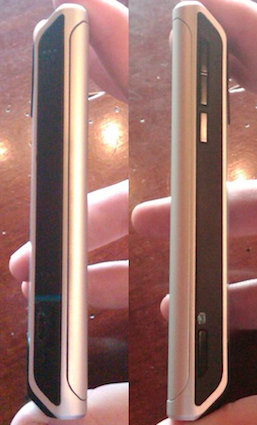
The left side of the Devour contains the battery door and microUSB charging port, while the volume rocker and camera button can be found on the right side of the device. The front of the device contains the screen, three touch buttons (menu, home, and back), the optical navigation pad, and the camera can be found on the back of the device. Slide the screen to the right to obtain access to the full QWERTY keyboard.
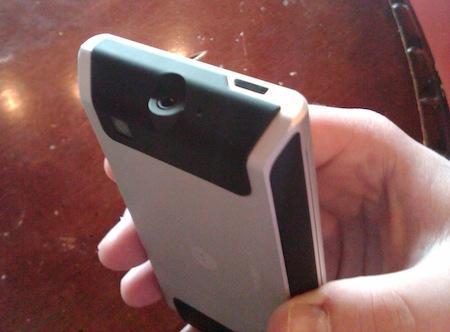
The device offers a 3.1-inch LCD capacitive touchscreen with 65,536 colors and 320 x 480 pixels. At first glance, the Devour's display is of lower quality (and smaller) than those found on the DROID and Nexus One, but it's acceptable. Despite the smaller screen, it's quite responsive and was a pleasure to use. The hinge is spring-loaded and clicks into place quite easily, though there was some play in my hinge. The winning feature on the Devour, however, is the unibody construction; gone are the days of wobbly battery doors and squeaking parts. The Devour has a beautiful metal body, and the battery and microSD card can be accessed from a side port.

The Devour sports a 600 MHz CPU, and while it suffered from the occasional lag, speed was generally good. From multitasking to general performance, everything felt relatively snappy. The device ships with Android 1.6, and Motorola's MOTOBLUR custom user interface. MOTOBLUR is an interesting animal, and I'll be honest - I'm not a huge fan. On one hand, I like the concept of being able to organize everything in one place, but on the other hand, BLUR feels way too busy. I placed the device in the hands of several "BLUR" newbies, and after ten minutes of use, both were quite confused with how to operate the phone. If you so desire, you can customize, add, and remove the widgets to your liking, so there's something you can do if the colors, text, and imagery becomes a blur (pun intended).
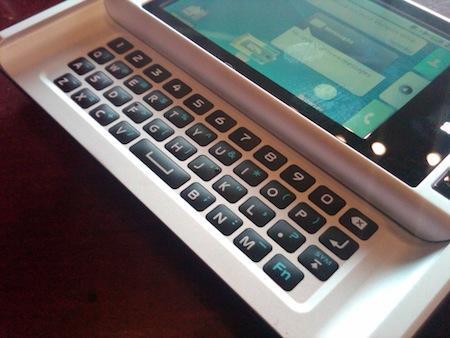
Sporting a full QWERTY keyboard, the Devour is ready for serious messaging. The keys are raised and curved slightly, making it relatively easy to feel them, but they're a bit too squishy for my liking. As such, I've found myself using the on-screen keyboard more than the physical QWERTY. This is probably where I'll disagree with every other journalist in the tech sphere, but I prefer the DROID's keyboard to the Devour's keyboard, due to the DROID's flat QWERTY configuration and non-separated keys. The optical navigation, while nice, wasn't necessary for most of the day-to-day phone operations. What's more, I found that it didn't work that well unless you were in the browser. It didn't seem like it was optimized for the menus. The buttons on the touchscreen operated well, with no issues whatsoever.
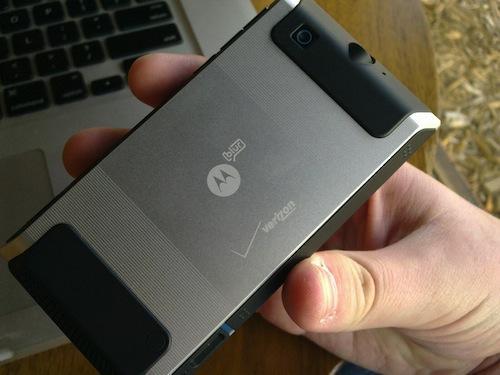
The Devour ships with a 3.0-megapixel camera, and in my testing, picture quality was mediocre and a bit grainy. Editing options include geotagging and color effects. The video camera quality was decent - good for quick clips to send to friends, but not for anything past that.
I tested the Devour in the Charlotte area, and call quality was mediocre. When I visited the Verizon dead spots in the city, most callers reported issues with hearing me, and I dropped several calls in service-challenged areas. Background static was present during conversations in the aforementioned areas. Despite those issues, I tested the speakerphone in a noisy gas station, and was able to hear my callers without a problem. While they were able to hear the background noise, it didn't prevent us from having a conversation. I successfully paired my Plantronics Voyager Pro Bluetooth headset to the device without a problem, and callers were unable to tell that I was using a headset.

Estimated talk time is 6.5 hours of talk time, and about 19 days of standby time. Overall, battery life was admirable. With moderate to heavy use including calling, text messaging, instant messaging, browsing the internet, and use of Google Maps, I was able to make it just over one day before the device powered down. I find it to be much better than other smartphones like the iPhone, Nexus One, and DROID.
The Motorola Devour offers 3G (EVDO) connectivity, so browsing speeds were very fast. The full CNN webpage loaded in about 18 seconds, and the PhoneDog homepage loaded in 26 seconds. Other data-intensive tasks such as Google Maps, the Android Market, Google Talk, and downloaded apps worked well. Though signal fluctuated on a regular basis, data speeds seemed to remain strong.
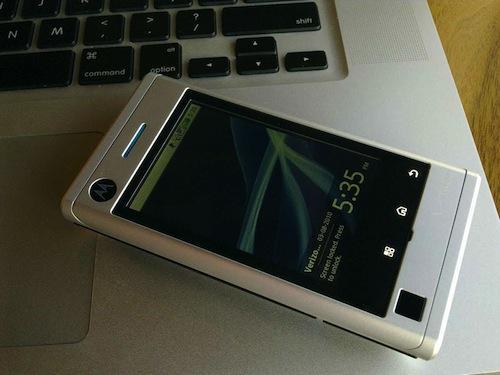
The Motorola Devour is a decent mid-level Android device that is a welcome addition to the Verizon lineup. It's a bit pricey in the $99-$149 range, leading me to believe that customers will (and should) opt for the DROID instead. I like the Devour in a lot of ways, but I found myself longing for the DROID or Nexus One after a few hours. I found MOTOBLUR to be relatively confusing, and wasn't a fan of the physical keyboard. That being said, it has a decent feature set and I love the unibody construction. If you're a Verizon customer in the market for a Android-powered smartphone, the Devour is worthy of a look.